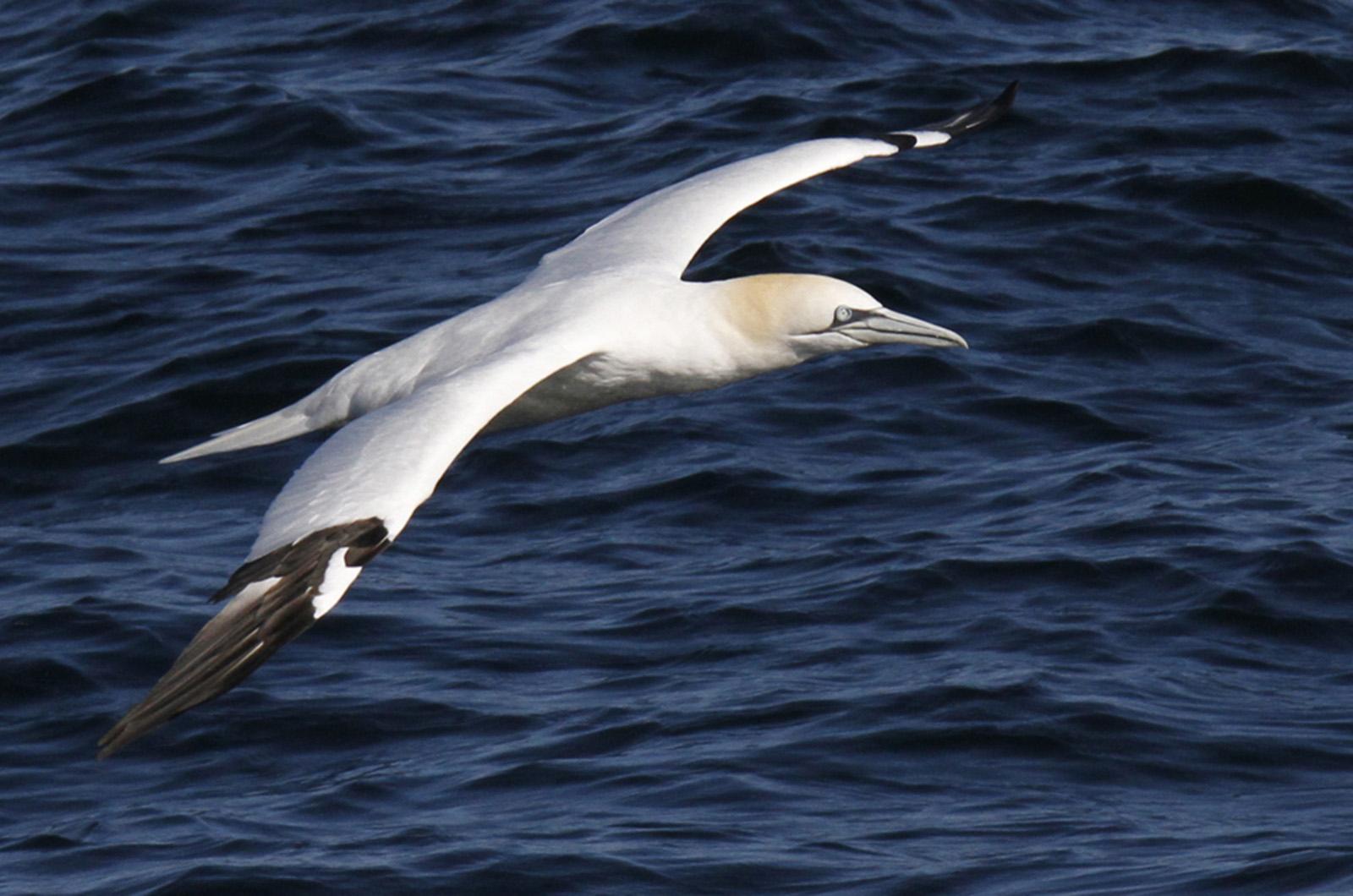While it may be intended as an insult, one should be proud to be called a gannet.
Gannets are miraculous and beautiful birds, even if the term is also used as a slur to describe a person who is gluttonous or greedy. That insult might have originated because of the way gannets eat, taking a fish and swallowing it whole immediately after catching it. As gannets prefer to target schooling fish, it could appear that they eat a lot. But since their prey is usually of the smaller variety, it may take more than few mackerel, smelts, anchovies, herrings or other fish to fill a gannet’s belly.
While it is not the most common time to see gannets in our area (they are more likely observed off-season), they can be seen year-round. And these large, graceful white birds are a treat to observe, as was noted by Edgartown beach director David Espindle, who saw some and wanted to know more about this stunning species.
Dave is not alone in his affection for this bird, being in excellent company with writer Mary Oliver, who penned an entire poem in homage. She expressively captures their diving ability: “I am watching the white gannets / blaze down into the water / with the power of blunt spears / and a stunning accuracy.”
Gannets are really built for speed. Their bodies are streamlined to allow for fast and effective diving. Reaching velocities of up to 60 miles per hour when they strike the water, gannets perform well in the air as well as under the water.
With exceptionally strong neck muscles, gannets resist injury when hitting the ocean surface. Also equipped with bubble-wrap-like air sacs in their face and chest, the impact is cushioned to prevent damage during their plunge dives. With internal nostrils found on the upper mandible of their bill, water intake during the plunge is reduced.
Their eyes are protected and quite effective, detecting prey from as high as 230 feet above the water’s surface, and then adapting to be able to see underwater. In an interesting discovery, gannet eyes change color after the bird is sickened by avian flu, originally gray or blue in color and changing to black after surviving exposure.
Once submerged, gannets go to depths of up to 100 feet, swimming with their feathers and feet. Those peculiar pedes serve another function: to incubate their single egg and keep the ensuing chick warm.
You won’t see a nest of chicks in these parts, as gannets breed much further north of Massachusetts. There are only a handful or so of these breeding colonies, called a gannetry, on the North Atlantic coast, and they are found on rocky coasts and islands off Canada and in the Gulf of Saint Lawrence.
The largest seabird in the North Atlantic, gannets weight up to eight pounds and have a wingspan of six feet, but nest closely together on cliffs and islands. They make large nests (that can be six-feet high) from natural and human-made objects (much like ospreys’ nests of collected stuffs).
Only one egg is laid, and that chick will be cared for by both parents, who seem to mate for life and are loyal to their nesting locations as well as to their partners.
The word gannet comes from the root ganot, meaning strong or masculine, though their scientific name Morus, means stupid, foolish, silly or doomed. This bird has proven its prowess and its detractors be dammed. I’ll stick with Mary and David’s assessment of bird brilliance and bona fides that belie any insults thrown its way.
Suzan Bellincampi is director of the Felix Neck Wildlife Sanctuary in Edgartown, and author of Martha’s Vineyard: A Field Guide to Island Nature and The Nature of Martha’s Vineyard.




Comments
Comment policy »